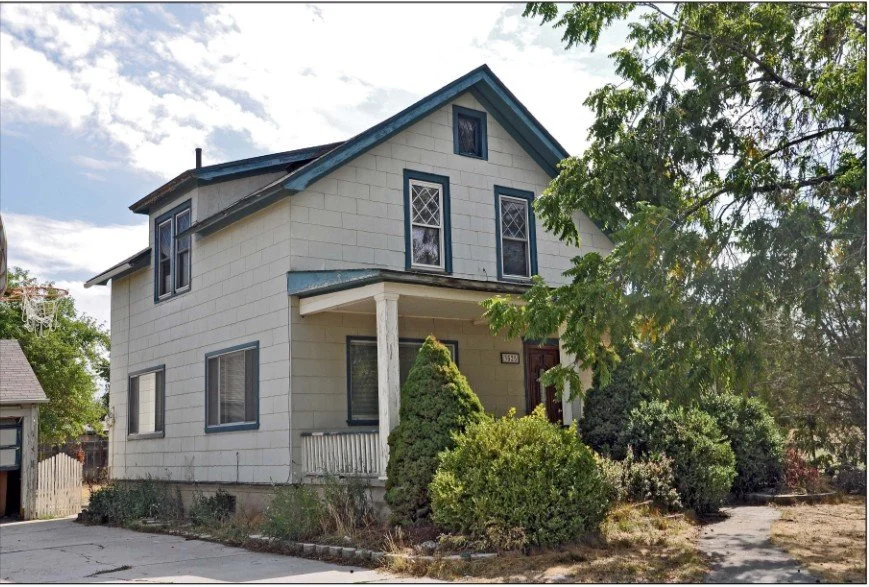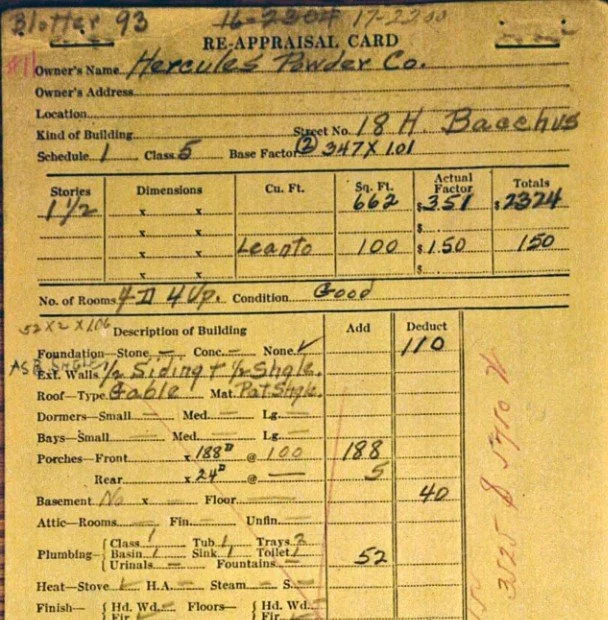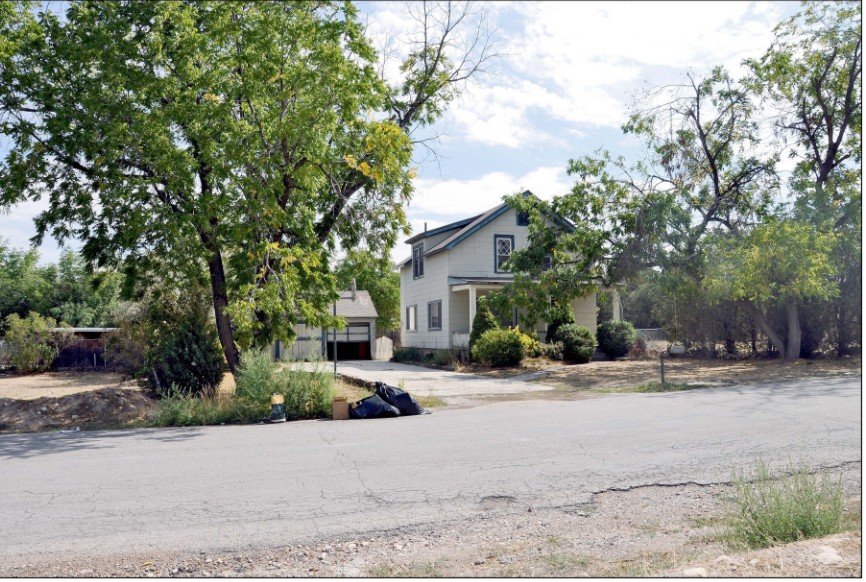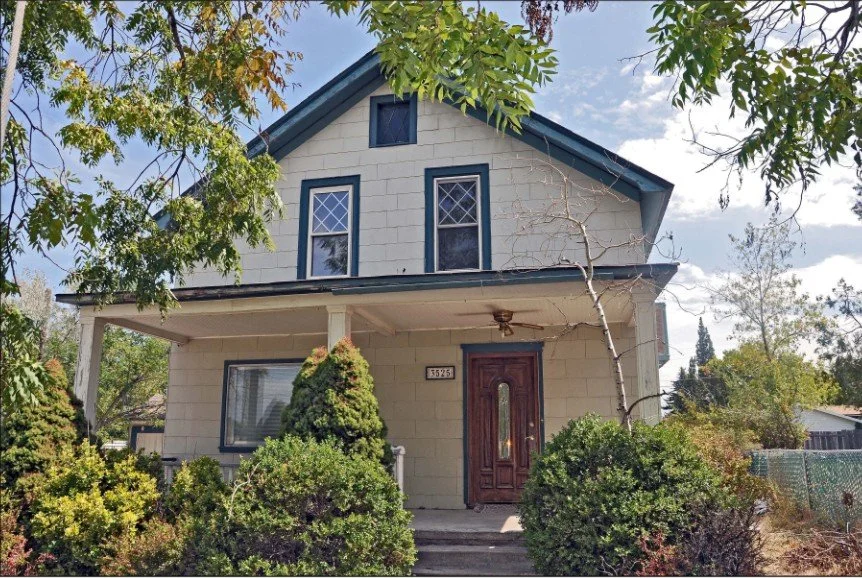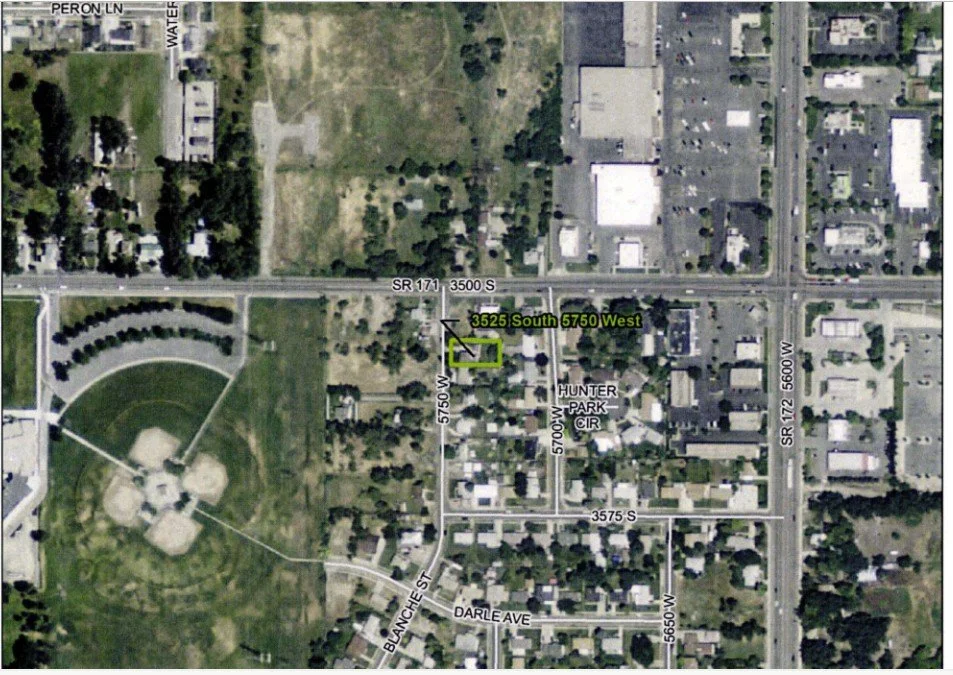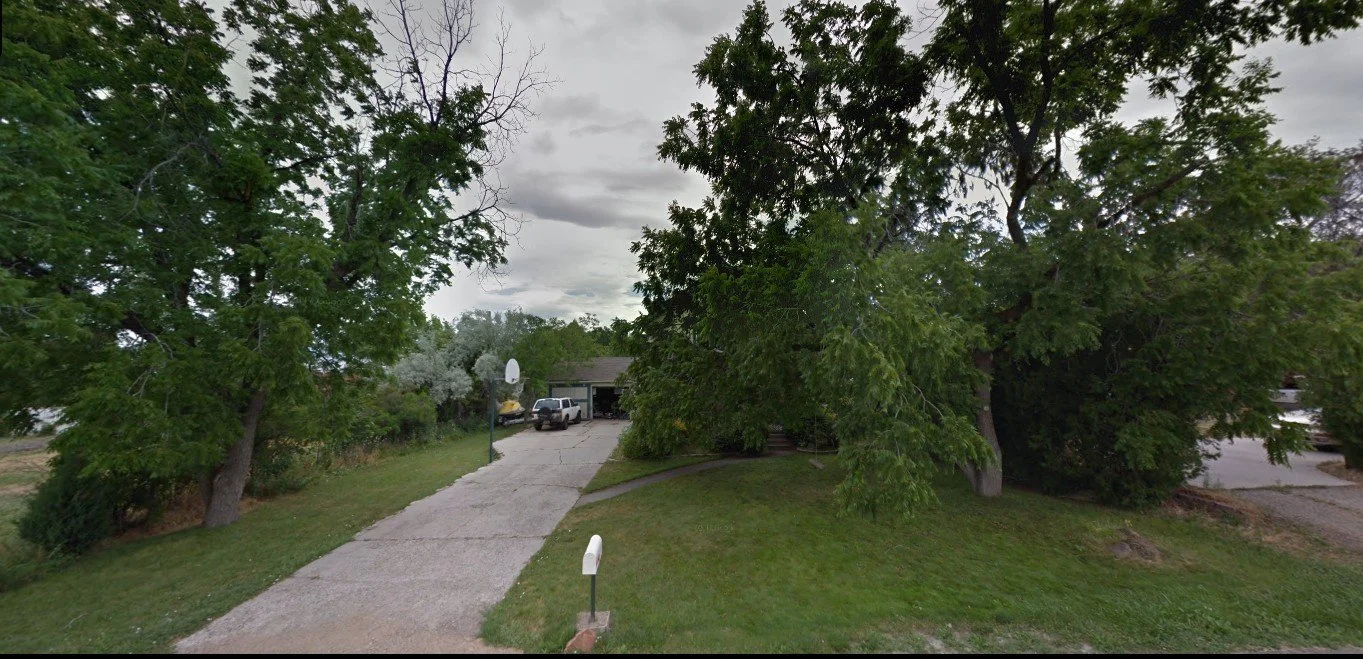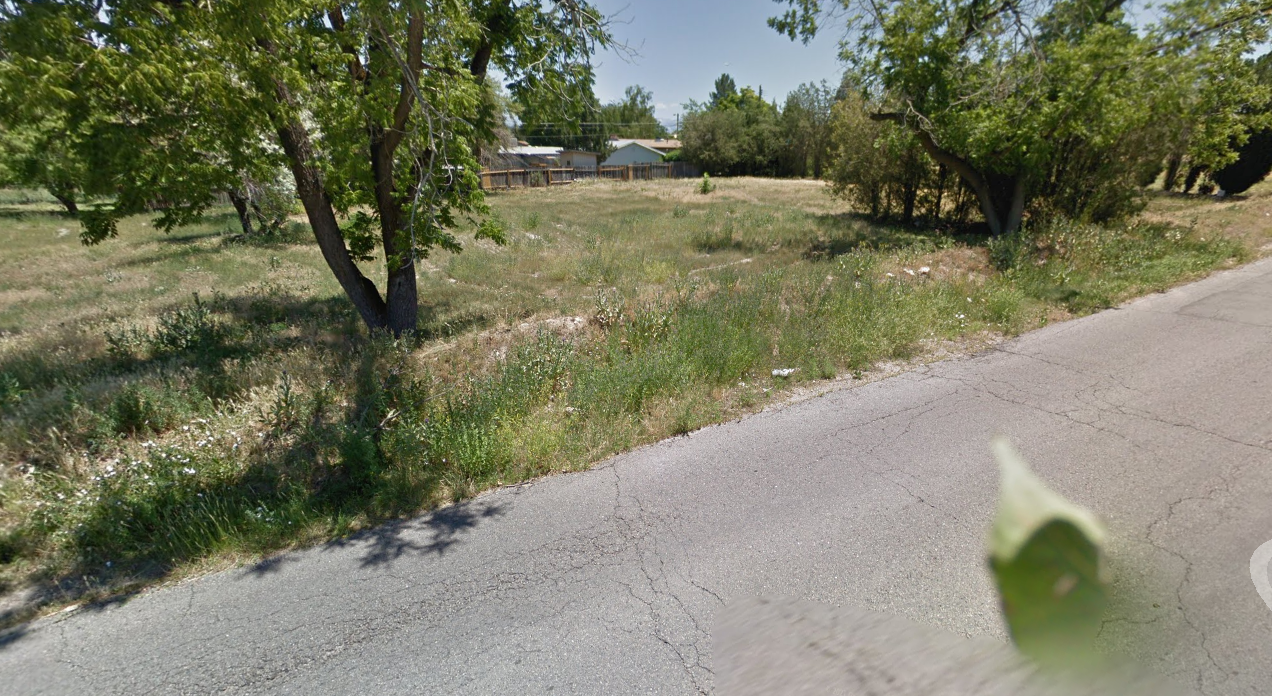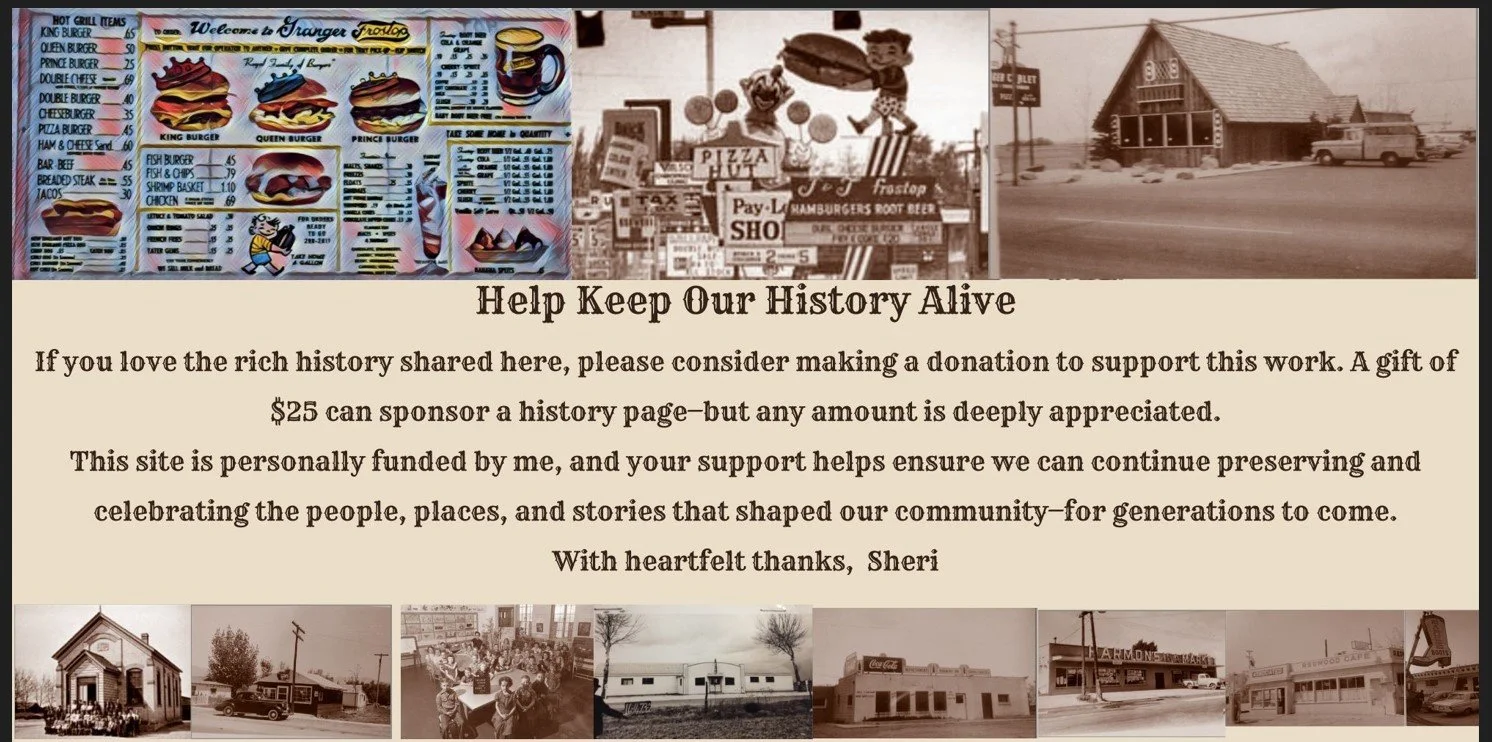3525 South 5750 West: A Bungalow Between Industry and Suburbia
3525 South 5750 West – From Company Town to Suburban Street
The home that once stood at 3525 South 5750 West began its life far from the busy neighborhood it would one day join. Built in 1917 by the Hercules Powder Company, the 1½-story gable-front Bungalow served as housing for workers in the company town of Bacchus, located on the eastern slope of the Oquirrh Mountains. Bacchus, renamed in 1915 for plant superintendent T. E. Bacchus, was an isolated industrial community centered around the manufacture of explosives and, later, solid rocket motors.
In its original setting at 18H Bacchus, the house reflected the comfortable yet modest style typical of early 20th-century company housing—wood siding, shingled upper walls, diamond-paned windows, and broad eaves. It was part of a larger network of homes built for Hercules employees at a time when such towns provided not only shelter but also a sense of controlled community for workers and their families.
By the mid-20th century, improvements in transportation and the appeal of more modern suburban neighborhoods led to the decline of Bacchus as a residential community. On July 13, 1954, LoTUS Ray Winn, likely a Hercules employee, applied for a building permit to move the house and its detached garage to a newly platted neighborhood—Lot 3 of the Jonesdale Subdivision, filed just four days earlier by Hunter native and developer Willard J. Jones. The move marked the home’s transition from remote company housing to an early piece of West Valley’s postwar suburban growth.
In its new location, the Bungalow stood out among the ranch-style houses that came to define the neighborhood. Over the decades, modern siding, altered windows, and reconfigured entries changed its appearance, but it remained a visible reminder of a bygone era. It passed through several owners before being acquired by the Utah Department of Transportation, which demolished it to make way for the Mountain View Corridor freeway.
Though gone, the house represented a unique bridge between two distinct chapters in Utah’s history—its early 20th-century industrial company towns and its booming midcentury suburban expansion.
circ 2011 home is still there
circ 2015 Home is gone
circ 2021 Mountain View highway


